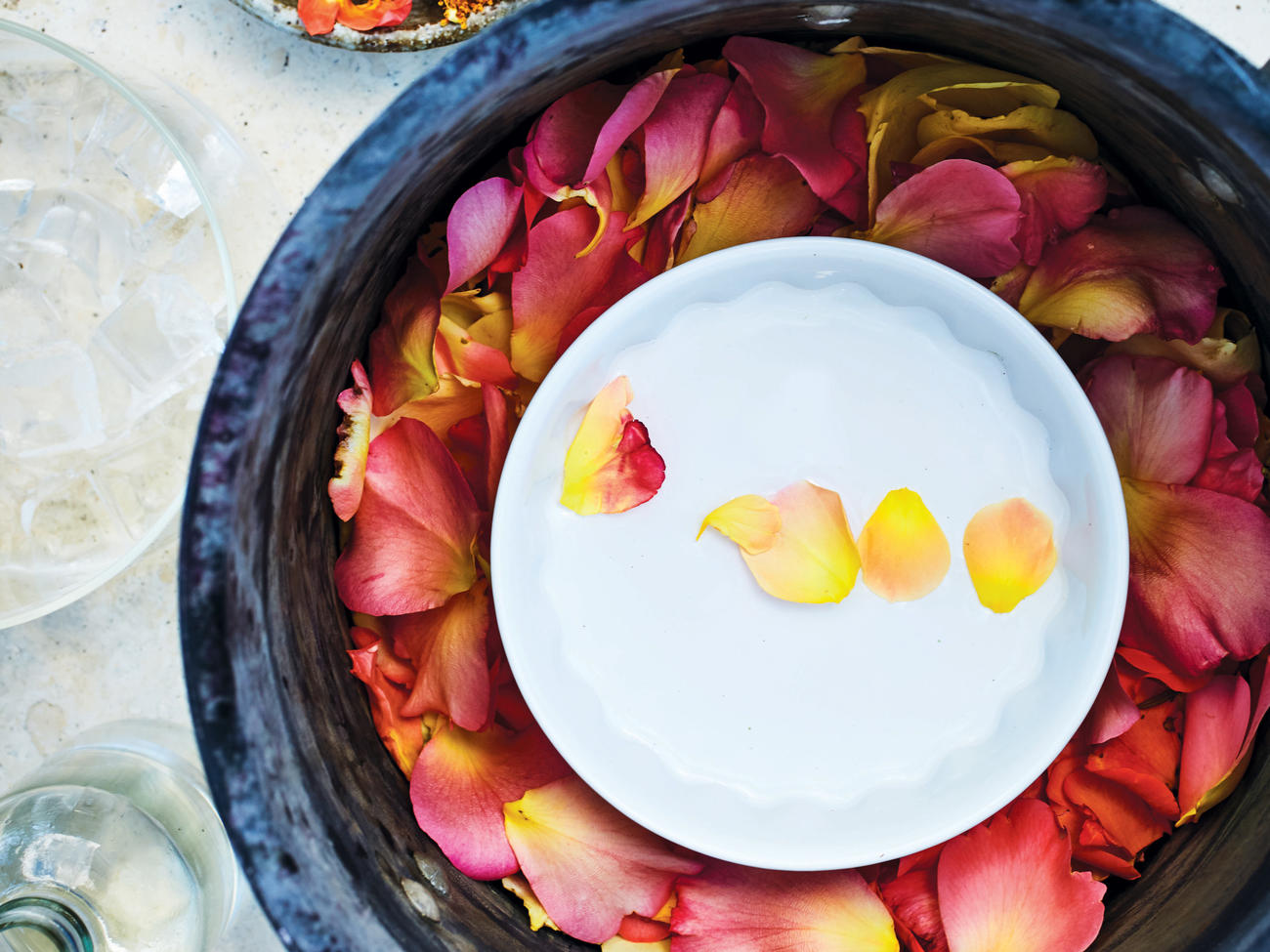
How to Make a Natural Face Toner

Rosewater is the perfect scent for a fragrance minimalist. Not only does it contain all of the medicinal benefits of roses, the water also takes on the wonderful scent of the flower as well. In addition to being an anti-inflammatory and a calming scent, rose is a natural cooling astringent with skin-soothing properties. This combination makes this rosewater facial toner a wonderful addition to your skin-care routine. Use daily by moistening a cotton pad or ball with a few drops of the rosewater and applying to your face.
Ingredients
- 15 to 30 roses
- 3 cups distilled water
- About 12 ice cubes
MAKES 3 OUNCES
Instructions
Dip the roses in cold tap water to clean them, and remove the petals. Place a medium heatproof bowl upside down in the bottom of a large pot. Scatter the rose petals around the inverted bowl. Pour the distilled water over the petals, then place a second heatproof bowl on top of the first, right side up. Cover the pot with the lid placed upside down so that the handle of the lid is inside the pot.
Bring the water to a gentle simmer on the stove. When you see condensation on the underside of the lid, place a few ice cubes directly on top of the lid or on a dish towel on top of the lid; this helps attract the rose essence–filled condensation to the center of the lid, so that it can drip into the bowl. Continue simmering the petals until all the water has been collected in the top bowl, which can take about 45 minutes. (Be careful not to boil longer than this; the delicate essence can overcook or you can scorch the pan if the water boils out.)
Remove the top bowl from the pot. Carefully pour the hot rosewater from the bowl through a funnel into a sealable bottle or small jar. Be careful not to spill any of the precious essence. Your rosewater is ready to use! It will keep for up to 3 months.
Strain the remaining petals from the water and collect any water left in the pan. The simmered water is darker in color than the essence, but it still smells wonderfully rosy. Add it to your rosewater or keep it separate and use it to flavor drinks or baked goods.
